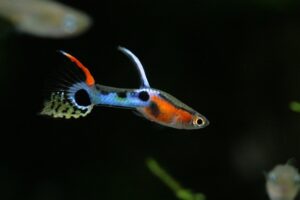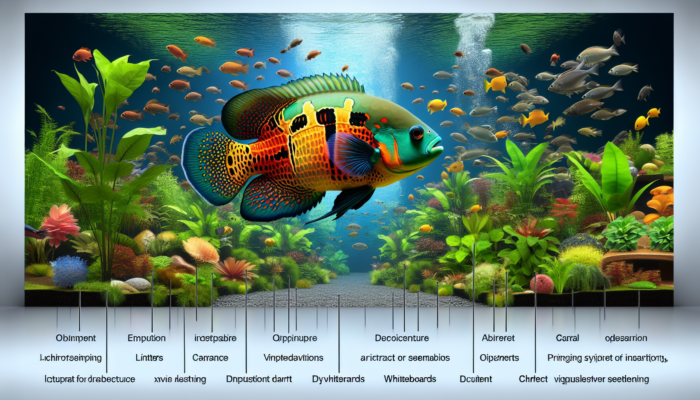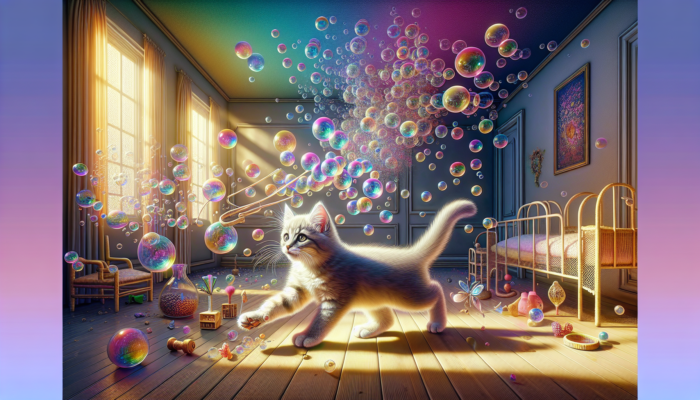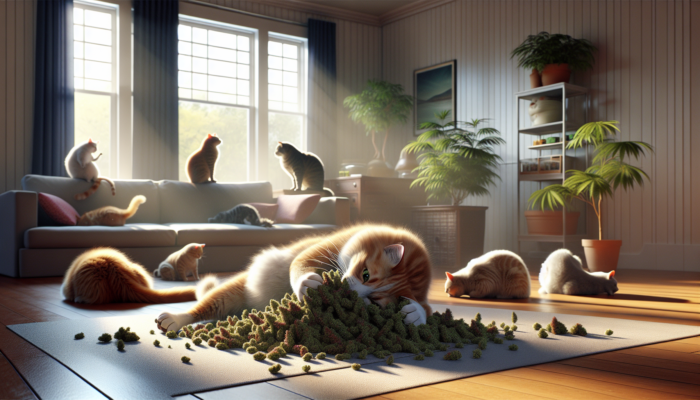What You Need To Know About Endlers
Contents
Welcome to our guide to Endlers!
What You Need To Know About Endlers: If you’re a fish lover, you’ve heard about endlers and their growing popularity as an aquarium hobby. In this post, we will look at what makes endlers unique and why they have grabbed the hearts of many fish keepers.
Whether you’re a newbie starting your aquarium or an experienced hobbyist looking for new additions to your collection, this guide will give you valuable insights and information.
Endlers, scientifically known as Poecilia wingei, are small freshwater fish from Venezuela. They are closely related to guppies and exhibit many similarities in appearance and behaviour. However, endlers have specific qualities that distinguish them.
Endlers are popular for various reasons, including their gorgeous and brilliant colours. These fish come in bright reds, blues, oranges, and yellows. Their vibrant colours make them a stunning addition to any aquarium, bringing colour and life to the aquatic world.
Another attractive feature of endlers is their modest size. Unlike larger fish species, which require huge tanks, endlers may live in smaller aquariums, making them perfect for hobbyists with limited space. Their modest size also means they require less maintenance and are easier to care for, making them ideal for novices.
Throughout this article, we will explore the world of endlers, including their care needs, breeding behaviours, and compatibility with other fish species. By the end of this study, you will have a thorough understanding of endlers and the necessary skills to care for this fascinating fish successfully.
What Are Endlers?
Endlers are little freshwater fish that are closely related to guppies. They are native to Venezuela’s streams and rivers, particularly the Laguna de Patos and Laguna de los Patos regions. Endlers are well-known for their vivid colours and distinctive patterns, making them popular among aquarium hobbyists.
One of the distinguishing features of endlers is their small stature. They usually grow about 1-1.5 inches long, making them ideal for tiny aquarium installations. Endlers have a thin body shape and slightly raised lips, giving them a unique appearance.
Endlers are noted for their playful and active behaviour. They are highly gregarious fish that thrive in groups; therefore, keeping them in schools with at least six fish is best. Endlers are also recognised for their tremendous activity and desire to explore their environment.
While endlers and guppies have many similarities, there are a few notable distinctions between the two. One of the primary differences is their size. Endlers are typically smaller than guppies, which can reach lengths of up to 2-3 inches. In addition, endlers have a more streamlined body form than guppies, which are rounder.
Another distinction is their hue. Endlers often have brighter and more detailed designs than guppies. Their colours vary from vivid reds and blues to shiny greens and yellows. This makes endlers an eye-catching addition to any aquarium.
Endlers are little, colourful freshwater fish that are similar to guppies. They are endemic to Venezuela and are recognised for their bright colours, energetic behaviour, and small stature. While endlers resemble guppies, they have distinct traits that make them a popular option among aquarium hobbyists.
Setting Up The Perfect Endler’s Tank
When creating the ideal endlers tank, there are a few essential aspects to consider. First and foremost, ensure that you have the appropriate tank size. Endlers are little fish, so a tank with a minimum volume of 10 gallons is advised. This will provide the endlers adequate area to swim and thrive.
Next, pay attention to the water’s parameters. Endlers prefer slightly acidic to neutral water with a pH of 6.5-7.5. The water temperature should be between 72°F and 82°F. It is also critical to test the water quality regularly to ensure that the levels of ammonia and nitrite are zero.
Filtration is another critical component of setting up an Endler’s tank. An effective filtration system can help keep water clean by eliminating debris and hazardous contaminants. Mechanical, biological, and chemical filtration is recommended to keep the tank clean and the water parameters stable.
Decorations play an essential role in providing an appropriate environment for endlers. Endlers are known to be shy and may seek shelter when challenged; thus, providing hiding spaces is critical. To build hiding locations, utilise rocks, driftwood, or artificial caves. Furthermore, living plants improve the tank’s aesthetics and provide cover and oxygen to the fish.
To summarise, creating the ideal endlers tank requires careful consideration of tank size, water parameters, filtration, and decorations. Providing a large tank for endlers, maintaining appropriate water conditions, and adding hiding spaces and plants will all contribute to their health and well-being.
Feeding and Nutrition
When feeding endlers, giving them a balanced meal that fits their nutritional requirements is critical. To survive and remain healthy, these little fish require a varied diet. Here are some essential aspects to consider:
Dietary Needs
Endlers are omnivores, which means they consume both plant and animal stuff. Their diet should include a variety of high-quality dry foods, live or frozen foods, and fresh produce.
High-quality dry foods.
Look for commercial fish flakes or pellets designed exclusively for small tropical fish. These foods should have an appropriate balance of protein, fat, and carbohydrates.
Live or Frozen foods
Endlers will profit immensely from occasionally feeding live or frozen items such as brine shrimp, daphnia, or bloodworms. These meals give essential nutrients and help to replicate their natural diet.
Fresh vegetables.
Introducing some fresh vegetables into their diet can be helpful. Blanched spinach, peas, and cucumber slices are all excellent sources of vitamins and fibre.
Feeding frequency
It is preferable to feed endlers in tiny amounts several times each day rather than in one principal meal. This helps them emulate their natural feeding behaviour and avoid overeating.
Portion Sizes:
Generally, give your endlers an amount they can finish in 2-3 minutes. Overfeeding can cause water quality problems and obesity. Thus, it’s crucial to avoid it.
You can safeguard the health and well-being of endlers by feeding them a varied and balanced diet. Remember to monitor their feeding habits and alter the amount and frequency of feedings. Endlers can thrive with sufficient nourishment, displaying brilliant colours and lively behaviour.
Breeding Endlers
Endlers are a popular and colourful fish that is quite simple to breed. Breeding endlers can be a pleasant experience for fish aficionados, but understanding the process is essential for success. In this post, we will review the conditions for breeding endlers, their mating behaviours, how to care for fry, and how to breed successfully and avoid inbreeding.
Conditions for Breeding Endlers
Before attempting to breed endlers, providing the appropriate environment for them is critical. Here are some essential factors to consider:
Water quality
Endlers flourish in clean, well-maintained waters. Regular water changes and good filtration are required to maintain high water quality.
Temperature
Endlers prefer temperatures ranging from 72 to 82°F (22 to 28°C). To avoid stressing the fish, maintain a consistent water temperature.
Lighting
A natural day-night cycle with a consistent light schedule can encourage endlers to breed.
Plants and Hidden Places
Adding living plants and hiding areas with rocks or driftwood might help endlers feel safe.
Mating Behaviours of Endlers
Endlers are livebearers, which means the females give birth to live fry rather than laying eggs. Understanding their mating behaviours can improve the chances of successful breeding.
Male Displays
Male endlers are recognised for their bright colours and elaborate displays designed to attract females. They frequently execute courtship dances and show off their fins to entice the females.
Female Selection
Females can store sperm from prior matings. Therefore, it is critical to introduce several males to avoid inbreeding and maintain genetic variety.
Gestation Period
Endlers typically have a gestation period of about 28 days, though this might vary. Pregnant females produce a gravid mark near their anal fin, suggesting that they have fry.
Caring for Fry and Avoiding Inbreeding
After the female gives birth, offering good care for the fry is critical to ensure survival.
Separating Fry
To keep adult endlers from devouring the fry, place them in a separate tank or use a breeding net within the main tank.
Feeding Fry
Fry should be fed small, high-quality meals like baby brine shrimp or powdered fry food frequently and in small amounts to ensure their growth and development.
Preventing Inbreeding
New endlers must regularly be introduced into the breeding population to prevent inbreeding and maintain genetic variation. This can be accomplished by buying new fish or trading endlers with other breeders.
Endlers can thrive and breed successfully if they follow these instructions and are provided with the proper environment. Breeding endlers may be an exciting and rewarding activity, allowing you to see the beauty of new life in your aquarium.
Common Health Issues and How to Prevent them
Endlers are little, colourful fish that are popular with aquarium enthusiasts. While they are generally hardy and easy to care for, they are nonetheless prone to some health problems. By being aware of these common issues and adopting preventative measures, you can secure your endlers’ well-being and help them thrive in their aquatic environment.
1. Swim bladder disorder.
Swim bladder dysfunction is a prevalent health concern for endlers. This ailment impairs the fish’s capacity to regulate its buoyancy, causing it to swim irregularly or struggle to remain upright. To avoid swim bladder disorder, keep the aquarium’s water quality high. This condition can be avoided by regular water changes, ensuring correct filtration, and avoiding overfeeding. If you observe any indicators of swim bladder disorder, such as difficulties swimming or floating on the surface, contact a fish-specific veterinarian.
2. Fin Rot
Fin rot is another prevalent health issue that Endlers may face. It is distinguished by the degradation of the fish’s fins, which might seem frayed or discoloured. Fin rot can develop due to poor water quality, stress, or injury. To avoid this issue, keep the aquarium clean and well-maintained. Regular water testing and filtration are needed. Furthermore, avoid overcrowding the tank and give endlers a stress-free habitat. If you observe any signs of fin rot, such as ragged fins or redness, consider treating the fish with suitable treatments and contacting a veterinarian if necessary.
3. Ich
Ich, often known as white spot sickness, is a widespread parasite affecting endlers and other fish. It is distinguished by little white spots on the fish’s body and fins. Ich can be introduced into an aquarium via diseased fish or polluted water. To avoid this disease, quarantine new fish before introducing them to the main tank and ensure the water conditions are appropriate for endlers. Maintaining high water quality and creating a stress-free environment can also help avoid ich. See a veterinarian to discuss treatment options if you suspect ich in your endlers.
4. Dropsy
Dropsy is a hazardous health disorder that can affect endlers. It is frequently caused by underlying conditions such as poor water quality, bacterial infections, or organ failure. It is distinguished by the enlargement of the fish’s body and protruding scales, giving it a pinecone-like look. To prevent dropsy, it is critical to maintain high water quality and feed endlers a balanced diet. Regular water testing, proper filtration, and avoiding overfeeding are critical. If you see any signs of dropsy, such as bloating or elevated scales, contact your veterinarian immediately because it can be challenging to treat.
By taking proactive steps to prevent these frequent health conditions, you can assure your endlers’ well-being and enjoy their vivid colours and energetic behaviour for many years. Keep a clean and stress-free habitat, maintain adequate water quality, and seek veterinary guidance. With appropriate care, your endlers can thrive and add joy to your aquarium.
Creating a Joyful and Healthy Atmosphere
Several essential elements must be considered to keep endlers happy and healthy. One of the most critical requirements is good water quality. Endlers are sensitive to changes in water parameters, so it is critical to test the water regularly and make any necessary adjustments. This includes monitoring pH, ammonia, nitrite, and nitrate levels. By keeping these conditions within the acceptable range, you may ensure your endlers thrive in their surroundings.
Another essential consideration is the tank’s temperature. Endlers are tropical fish that like water temperatures of 75°F to 82°F. You must invest in a good heater to keep the aquarium at a steady temperature. Temperature fluctuations can cause discomfort and even health difficulties for endlers. Additionally, it is critical to offer appropriate lighting for your endlers. A well-lit tank can encourage natural behaviours and boost general well-being.
Tank maintenance is also essential for providing an enjoyable and healthy environment for endlers. Regular water changes are required to eliminate accumulated pollutants and preserve water quality. Aim to change around 25% of the water every two weeks. Additionally, it is critical to clean the tank and remove any trash or uneaten food. This prevents hazardous bacteria growth and keeps the tank clean and visually appealing.
To summarise, having a happy and healthy habitat for endlers entails keeping adequate water quality, providing the optimum temperature, and regular tank maintenance. Attention to these elements will help your endlers thrive and enjoy their home.
Compatible With Other Fish Species
When keeping endlers in a community tank, you must consider their compatibility with other fish species. While endlers are generally calm and can coexist with various tank mates, there are a few things to remember to create a pleasant aquarium environment.
1. Endlers are little fish with a maximum size of approximately 1.5 inches. To avoid predatory behaviour or unintended harm, tank mates should be of equal size.
2. Temperament: Endlers are recognised for their peaceful disposition and, therefore, avoid aggressive or fin-nipping species. Find fish with a similar disposition, such as tetras, guppies, or rasboras.
3. Water Parameters: Endlers appreciate slightly alkaline water with a pH of 7.0–8.0. To ensure the best possible health for all fish in the aquarium, find tank mates with similar water parameter requirements.
4. Swimming Level: Endlers are active swimmers who inhabit the middle to higher levels of the aquarium. Consider tank mates that swim at various levels, such as bottom-dwelling corydoras catfish or top-dwelling hatchetfish.
5. Avoid Fin-Nippers: Some fish species nip at other fish’s fins, causing stress and harm. Endlers should not be kept with fin-nipping species such as tiger barbs or bettas.
6. Suitable Tank Mates: Several fish species are compatible with endlers, including
Guppies
Tetras
Rasboras
Corydoras Catfish.
Hatchetfish
Platies
These species have comparable requirements and temperaments, making them good tankmates for endlers.
By considering the size, temperament, water parameters, swimming level, and avoiding fin-nippers, you may establish a happy community tank with endlers and other fish species. Remember to thoroughly research the demands and behaviours of any possible tank mates before adding them to your aquarium.
Tips for choosing and acquiring endlers.
Remember a few key points when selecting and acquiring endlers. These recommendations will help you choose healthy endlers from trusted sources and avoid problems in the future.
1. Research credible sources.
Before making a purchase, it is critical to research and locate reliable sources for endlers. Look for long-standing breeders or reliable pet businesses that specialise in fish. Reading reviews and requesting suggestions from experienced fishkeepers can help you identify trustworthy providers.
2. Observe fish behaviour.
When you visit a store or a breeder, take the time to observe the endlers. Healthy fish should be active, swimming around the tank and engaging with their surroundings. Avoid fish that appear lethargic, have clamped fins, or exhibit indications of stress.
3. Assess the appearance of the fish.
Examining the appearance of the endlers is another critical step. Look for fish with bright colours, clear eyes, and healthy fins. Avoid fish exhibiting disease symptoms, such as white patches, damaged fins, or apparent parasites. It is also critical to look for indicators of overcrowding or poor water quality in the tank.
4. Consider tank conditions.
Before bringing endlers home, evaluate the tank conditions. Ensure you have a sufficient tank setup, including proper filtration, heating, and water parameters. Endlers flourish in well-kept tanks with consistent water conditions.
5. Quarantine new fish.
After you’ve chosen your endlers, quarantine them before adding them to your main tank. This helps avoid spreading any potential diseases or parasites to your current fish. Quarantine tanks should be put up in the same circumstances as your main tank, and the new fish should be regularly monitored for signs of disease.
Following these guidelines can improve your chances of choosing and getting healthy endlers for your aquarium. Always prioritise the fish’s well-being and use credible sources to guarantee a good and successful fishkeeping experience.
Finally, endlers are fascinating and gorgeous fish that would make an excellent addition to any aquarium. Throughout this article, we have covered various topics about endlers, including their origins, physical characteristics, care needs, and breeding practices.
One crucial factor is that endlers are hardy species that can adapt to various water conditions. However, it is still necessary to provide them with a proper environment that resembles their original home.
This includes keeping the water temperature and pH steady and ensuring correct filtration and aeration. Endlers’ diet is also a crucial consideration in their care. These omnivorous fish require a balanced diet, including live and commercial meals. It is critical to offer them diverse dietary alternatives to ensure they acquire all the vital nutrients.
Breeding endlers can be a gratifying experience, but it takes careful planning and attention to detail. It is critical to segregate males and females to avoid overbreeding and preserve the health of the fry.
Additionally, giving a variety of hiding places and plants in the aquarium will protect the fry from being eaten by adult fish.
Endlers require proper care and attention to maintain their health. By adhering to the criteria outlined in this article, you can provide a robust and vibrant habitat for your endlers.
Remember to monitor water parameters regularly, offer a balanced diet, and, if desired, establish a proper breeding arrangement. Following the advice in this article can assure your endlers’ long-term health and happiness.
These gorgeous fish will provide joy and beauty to your aquarium for many years. So please enter the realm of Endlers and appreciate the wonders it offers!





This guide is really interesting! I’ve been considering adding endlers to my tank, especially after hearing how vibrant they can be. I love how they can thrive in smaller setups too, which is great for those of us with limited space. Have you found any specific color variations that stand out more in terms of personality or brightness? I’ve heard some people rave about the “candy” endlers, and I’m curious if they’re as stunning in person as they sound! It’s also fascinating how closely related they are to guppies, yet they seem to have a unique charm of their own. I wonder how their behaviors differ in a community tank setting. Would love to hear others’ experiences!
It sounds like you’re really diving into the world of endlers, which is great to hear. The color variations in endlers can certainly be striking. Each strain can have its own uniqueness not just in color but in personality as well. For instance, I’ve noticed that the “candy” endlers do tend to stand out with their bright, almost neon color patterns. They can be impressive when you see them in person, as the colors seem to pop even more under the right lighting conditions.
I get what you mean about endlers—there’s something truly captivating about their colors, especially the “candy” endlers. They have this mix of soft pastels and bright pops that can look amazing in person, almost like they’re glowing under the right lighting. I’ve noticed that their personality can sometimes match their vivid appearance; many hobbyists mention how active and curious they are, which adds another layer of charm to their presence in the tank.
It’s fascinating to see the increasing interest in endlers, especially considering their close relation to guppies. I remember when I first introduced them into my tank—they added such a lively burst of color and energy! Their adaptability is impressive, too; I’ve had them thrive in both community tanks and as part of specific breeding projects.